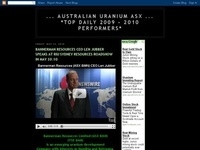Published on Monday October 31 2011 (AEST)

At that time India will again be restored to its rightful place in the eyes of the Australian people and uranium exports will go ahead.
New Delhi can relax, the Australian media is doing its lobbying for it - especially on the uranium front. Slamming Prime Minister Julia Gillard's foreign policy as "obsolete and discredited", a writer in The Australian has contended that it is prejudicing Australia's ties with India, the emerging third-biggest economy in the world.
"That the ALP (Australian Labor Party) ... should continue to impair Australia's economic and strategic interests is intolerable. If this situation continues uncorrected at the December national conference then Gillard should be held to account for allowing Labor's atiquated obsessions about uranium and nuclear power to prevent Australia from following an India policy that its ministers know is desirable and inevitable," wrote Paul Kelly, the paper's editor-at-large.
Kelly wrote: "Consider the facts. Australia exports uranium yellowcake to China, Japan, South Korea, the US, Taiwan and several European countries... (Hence) there is no justification, strategic or economic, for the ban (on selling to India)."
The ban was imposed by the Kevin Rudd government in 2008, reversing an earlier decision by the previous Howard government.
The Australian media sees Prime Minister Manmohan Singh's absence at the ongoing Commonwealth heads of Government Meeting (CHOGM) as a clear snub to Australia over its no-uranium-for-India policy.
Kelly quoted Labor Senator Stephen Loosley, described as a foreign affairs specialist, as saying: "The Indians have sent a clear and unambiguous message at Perth. They regard this issue as important to them."
In another piece, titled 'Empty chair at CHOGM shows India policy hurdle', Greg Sheridan, The Australian's foreign editor wrote: "...We only need to look to India, as the world's most populous democracy, to realize that for all the fashionable dogma about colonialism, the spread of democratic institutions has been beneficial for people in countries where they have been properly administered.
"Despite enormous challenges, India continues to lift millions of people out of poverty as it modernizes its economy and asserts itself as an international power. Just as India represents the greatest weight of the Commonwealth, and perhaps the strongest manifestation of its ideals, so the absence of its Prime Minister, Manmohan Singh, from Perth delivers the sharpest blow to CHOGM."
He went on to add: "If this summit is to affirm its relevance it must attract engagement from India. Julia Gilard will be privately disappointed at this snub, which cannot be divorced from the pallid state of Australia's broader relationship. Over many decades Australia did not place sufficient emphasis on this relationship. John Howard belatedly recognized this and, after his second visit, in 2006, sought to elevate the bond.
"One important initiative in this process was agreeing to export uranium to India. On coming to power, Kevin Rudd also saw the potential and visited New Delhi. But Labor overturned the export decision because India is not a signatory to the Nuclear Non-Proliferation Treaty. This, together with attacks in Melbourne on Indian students, soured the relationship. The figuratively empty chair in Perth (India has sent its vice-president) emphasizes the urgent need to repair this relationship. Ms Gillard should endorse former South Australia premier Mike Rann's call to change Labor policy on uranium exports."
The last Indian prime minister to visit Australia, the media noted, was prime minister Rajiv Gandhi in 1986.
Though media reports say that Vice President Hamid Ansari, who is leading the Indian delegation to CHOGM in Manmohan Singh's absence, will take up the matter of uranium exports in his meeting with Gillard on Sunday, officials say this is not likely.
 Australian Uranium News - Research
Australian Uranium News - Research



